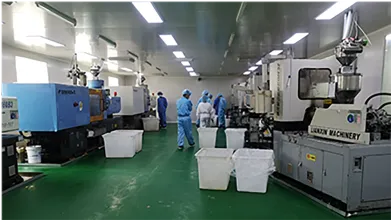vial sterile
Understanding Vial Sterility Importance, Applications, and Best Practices
In the pharmaceutical and biotechnology industries, the concept of sterility is paramount, especially when it comes to the storage and distribution of biological materials, vaccines, and injectable medications. One of the critical components in ensuring sterility is the use of vials, specifically designed to maintain a sterile environment for their contents. This article explores the significance of vial sterility, its applications, and best practices for handling and storage.
The Importance of Sterility
Sterility refers to the absence of viable microorganisms, including bacteria, viruses, and fungi. In the medical field, the introduction of pathogens can lead to severe consequences, including infections and compromised patient health. Therefore, ensuring that any injectable substance is free from contaminants is crucial. This is where sterile vials come into play. They are manufactured under strict conditions to guarantee that they remain uncontaminated during production, storage, and distribution.
Applications of Sterile Vials
1. Pharmaceutical Products Sterile vials are commonly used to package various pharmaceutical products, especially those intended for injection. These products include biologics, vaccines, and parenteral drugs that require a germ-free environment to ensure safety and efficacy.
2. Biotechnology The biotechnology sector often deals with sensitive biological materials, including cell cultures and genetic constructs. Sterile vials protect these materials from contamination, ensuring that research and development processes can proceed without unintended microbial interference.
3. Laboratory Use In laboratories, sterile vials are essential for storing samples and reagents that need to remain uncontaminated. This is particularly vital in microbiology, where even minute contamination can skew experimental results.
4. Diagnostics Diagnostic testing often involves the collection and transport of biological samples, which need to be preserved in a sterile environment. Sterile vials ensure that the integrity of these samples is maintained until testing can occur.
Best Practices for Handling Sterile Vials
vial sterile

To maintain the sterility of vials and their contents, various best practices should be observed
1. Proper Storage Sterile vials should be stored in a controlled environment, away from direct sunlight and fluctuating temperatures. This helps prevent degradation of the materials and ensures that the vials retain their sterility until they are needed.
2. Aseptic Technique When opening and using sterile vials, it is crucial to employ aseptic techniques. This includes thoroughly cleaning surfaces, using gloves, and minimizing exposure of the vial's opening to the environment to prevent contamination.
3. Inspection Before Use Prior to using a sterile vial, it’s essential to inspect it for any signs of damage, such as cracks or leaks. Any compromised vial should be discarded, as it may not guarantee sterility.
4. Use of Sterile Equipment When withdrawing contents from a vial, always use sterile syringes and needles. This minimizes the risk of introducing contaminants.
5. Education and Training Individuals handling sterile vials should be well-trained in best practices and the importance of sterility. Regular training sessions can help reinforce the significance of maintaining a sterile environment.
6. Waste Management After use, proper disposal of vials and associated materials is crucial in maintaining overall sterility in the environment. Follow local guidelines and regulations for disposing of biohazardous waste.
Conclusion
The sterility of vials is a significant concern in the medical, pharmaceutical, and biotechnology fields. Ensuring that these containers remain uncontaminated is a critical step in safeguarding patient health and ensuring the efficacy of medical products. By understanding the importance of sterility, the applications of sterile vials, and adhering to best practices for handling, we can enhance safety and maintain the integrity of pharmaceuticals and biological materials. Ultimately, this vigilance benefits not only manufacturers but also patients who rely on these products for their health and well-being.
-
Aesthetic Makeup Spray Bottles | Fine Mist Empty RefillableNewsAug.19,2025
-
White Plastic Veterinary Vaccine Vials | Lab Liquid BottlesNewsAug.18,2025
-
Plastic Medicine Liquid Bottle: Secure Flip Top Drug VialsNewsAug.17,2025
-
Durable 250ml Blue Plastic Vaccine Vial for Lab & Vet UseNewsAug.16,2025
-
Sterile Virus Sample Tubes: Secure & Reliable Specimen CollectionNewsAug.15,2025
-
White 250ml Plastic Vaccine Vial for Lab & Vet MedicineNewsAug.14,2025
























